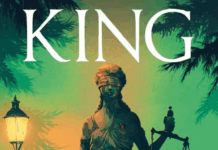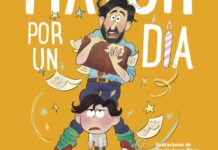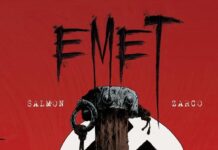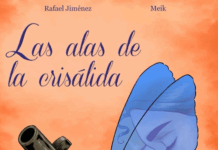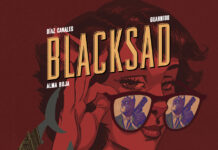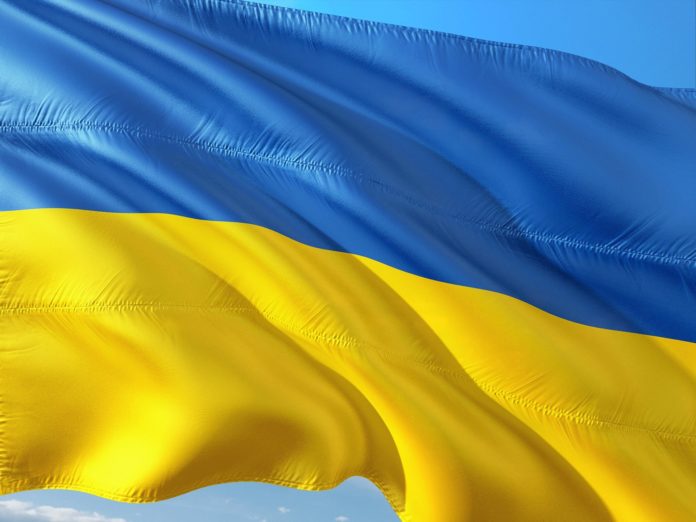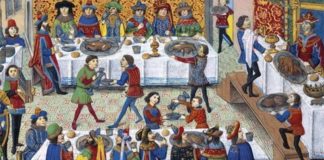Buenos días, señor Chmelyk. Antes que nada mandar todo el apoyo de Fantasymundo y nuestros lectores en estos tiempos difíciles. Esperamos que tanto el personal del museo como todos, en la medida de lo posible, os encontréis a salvo y que esta infame invasión termine cuanto antes.
Usted es director del Museo de Historia de Lviv, en el Oeste de Ucrania. Lviv es conocida como la “París del Este”, y sin duda en sus calles se respira un ambiente arquitectónico y artístico muy europeo. Su museo tiene una colección de piezas que va desde la Prehistoria hasta los acontecimientos más relevantes del siglo XX, ¿cuáles diría usted que son los puntos clave de Lviv en materia cultural?
«Los ucranianos, en su nombre, están haciendo todo lo posible para salvar los lugares protegidos por la UNESCO pero carecemos de medios, sobre todo militares.»
Lviv es una ciudad típicamente europea y con una larga tradición de autogobierno, basada en la Ley de Magdeburgo. Se trata de una de las ciudades más bellas de Europa, con objetos que pertenecen a la lista del Patrimonio Mundial de la UNESCO. Son especialmente valiosos los conjuntos arquitectónicos de la plaza Rynok (siglos XV-XIX), las calles Virmenska (siglos XVI-XVII) y Ruska, la iglesia de la Dormición o Asunción (siglos XVI-XVII) y la catedral de San Jorge (siglo XVII). Lviv es una ciudad de museos, cuyo número es el más alto de Ucrania. Sus colecciones son una parte esencial del patrimonio cultural europeo centenario. En Lviv se conservan objetos únicos de la historia y la cultura de los pueblos ucraniano, polaco, judío, armenio, lituano, checo, alemán y francés, así como de otras naciones del mundo.
La invasión rusa ha puesto patas arriba la vida de toda la nación ucraniana. En lo relativo a los museos de su ciudad, ¿qué medidas han tenido que tomar o siguen tomando para proteger su patrimonio?
El bombardeo de las ciudades ucranianas desde el primer día de la guerra nos obligó a tomar medidas inmediatas para preservar el patrimonio cultural mueble e inmóvil. En el paisaje arquitectónico de Lviv ya podemos ver cubiertas las fachadas de las capillas de Boim (principios del siglo XVII) y Kampian (finales del siglo XVI), las vidrieras de la catedral latina (siglos XIV-XVIII) y de la iglesia de la Dormición (siglos XVI-XVII), así como las esculturas de héroes de la mitología clásica de la plaza Rynok, creadas por Hartman Witwer, etc., protegidas con escudos de madera y chapas metálicas. Varias esculturas de las calles de la ciudad y todas las exposiciones de los museos de Lviv han sido desmanteladas, mientras que los objetos expuestos se han reubicado en lugares seguros.
El edificio del museo de Historia de Lviv es hermoso, vestigio del momento álgido y de mayor prosperidad de la ciudad en el siglo XX. ¿Cómo se vive sabiendo que una herencia semejante está bajo un peligro real de desaparecer?
El Museo Histórico de Lviv está establecido en 10 lugares, cuyos edificios fueron construidos entre los siglos XVI y XX. Cinco de ellos pertenecen a la Lista de Patrimonio Mundial de la UNESCO. Esto significa que esta organización internacional que actúa en el seno de la ONU reconoce su singularidad y la importancia de su conservación para las generaciones futuras. Al mismo tiempo, el Estado ucraniano asumió ciertas obligaciones para preservarlos. Su protección contra los misiles terroristas lanzados por el Estado agresor debe convertirse en objetivo para la sociedad mundial. Los ucranianos, en su nombre, están haciendo todo lo posible para salvarlos pero carecemos de medios, sobre todo militares, para cerrar el espacio aéreo y contrarrestar eficazmente al estado terrorista.
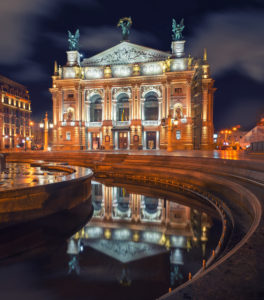
El presidente Zelenskyy hizo un llamamiento a todos los ciudadanos para que, en la medida de lo posible mantuvieran la normalidad en sus trabajos. ¿Han seguido trabajando con normalidad en el museo? Si no es así, ¿cuál es su día a día y el de los trabajadores en medio de la guerra?
Durante la guerra, los esfuerzos de nuestros empleados se centran en garantizar el máximo nivel de seguridad de los objetos e instalaciones del museo. En algunos puestos se ha optado por el teletrabajo. Por razones de seguridad, no podemos recibir visitas ni realizar actividades de exposición o educativas.
A la hora de poner a resguardo las piezas históricas, ¿han tenido que tomar decisiones sobre qué piezas proteger y cuáles no? Su museo salvaguarda la memoria etnográfica de Ucrania. Sus fondos son muy diversos, algunos muy delicados, como la colección de porcelanas, y algunos voluminosos, como el mobiliario. ¿Qué criterios seguirían a la hora de decidir qué se traslada o preserva para su conservación? ¿Han considerado trasladar los fondos históricos a otros países que se han ofrecido a acogerlos?
Nuestro deber es preservar todas las piezas de las que somos responsables. Es extremadamente difícil esta labor, puesto que su número supera las 360.000. Los últimos ocho años de guerra en Ucrania nos han enseñado a estar preparados para situaciones inusuales. Cada museo ha decidido cuáles son sus objetos más valiosos de acuerdo con su orientación. Estos criterios pueden ser desde la importancia histórica, el valor artístico, el significado religioso o conmemorativo particular de un objeto, etcétera.
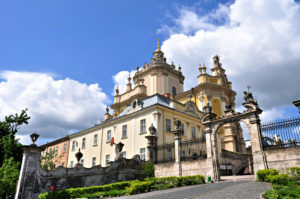
El mundo entero ha sido testigo de la destrucción de importantes lugares patrimoniales de Ucrania: el museo de María Prymashenko, el museo histórico de Chernigov o de Ivankov, el museo de Kvindzhi en Mariupol así como su teatro… ¿Hasta dónde cree que puede quedar dañado el patrimonio del país? ¿Cree que son ataques deliberados?
La guerra iniciada por Rusia contra Ucrania no tiene como único objetivo la conquista de territorio. En primer lugar se trata de una guerra de civilizaciones que se libra entre países con diferentes visiones del mundo. El territorio de Ucrania es solo un campo de batalla. El círculo de participantes en esta lucha es mucho más amplio. Desde esta perspectiva, la destrucción de Ucrania sería el ejemplo de lo que debe temer el resto del mundo. Con la fuerza militar, incluida la intimidación con armas nucleares, tratarán de ampliar las fronteras del régimen autoritario de Putin.
El patrimonio cultural de Ucrania es una parte esencial de la identidad del país. Según la lógica de Moscú, debe ser aniquilado por completo, ya que mentalmente forma parte de una ideología hostil. Si Putin no tiene ninguna consideración por la vida de sus propios ciudadanos, a los que envió a la guerra contra Ucrania sin ninguna razón, entonces qué valor tiene para él el patrimonio cultural del enemigo… Carthago delenda est.
El arqueólogo español, Alejandro Martín López dijo: “No hay forma más efectiva de subyugar a una sociedad que destruir todo aquello que encarna su alma”. Bibliotecas, museos, todo referente cultural y espiritual… Rusia ha demostrado que ni la historia ni la cultura le importan a la hora de conseguir sus objetivos. ¿Cómo cree que se puede luchar contra algo así? ¿Cómo se puede salvaguardar el alma de un pueblo en medio de una guerra?
La guerra de Rusia contra Ucrania ha unido a la sociedad ucraniana contra todo pronóstico. Los ucranianos, independientemente de su lengua, religión y afiliación partidista, se han levantado para proteger su patria, su territorio y su condición de Estado. El espíritu de lucha del ejército y de los civiles es extremadamente alto. Los civiles de a pie hacen cola en las oficinas de alistamiento para unirse a las filas de las Fuerzas Armadas de Ucrania. Muchos de ellos no tienen experiencia militar y por ello son enviados a casa. Después se unen a otra cola para obtener una licencia de armas y a otra en la tienda de armas. Todo esto da testimonio del espíritu y el alma de la nación, que se templan aún más en el fuego de la guerra.
¿Cuál cree usted que son las diferencias étnico-nacionales entre Rusia y Ucrania? ¿Por qué cree que los rusos han intentado en varias ocasiones borrar Ucrania como país independiente?
Cada nación y cada Estado tienen su propia historia, cultura, religión, tradiciones y costumbres que conforman su conciencia e identidad nacionales. Los ucranianos y los rusos son dos pueblos diferentes que conviven desde hace siglos. Hablando de la cultura habitual, los ucranianos siempre han dado gran importancia a su autogestión, a la libertad personal y a las relaciones familiares igualitarias. Los rusos han sido mayormente proclives a la propiedad comunal de la tierra y a la gestión colectiva, así como a las relaciones patriarcales en la familia.
Los ucranianos se centraron predominantemente en la construcción de la estructura y la comunicación en el plano horizontal sobre un principio de red, descuidando a veces la jerarquía de poder de su sociedad. El valor de la libertad personal, el tratamiento de lo ajeno como otro, pero no ajeno, es lo que ha conformado el espíritu de nuestro pueblo, pero a veces se convirtió en los procesos de construcción del Estado. Durante siglos, los rusos se han acostumbrado a funcionar en una dura estructura estatal, en la que un individuo no era más que un pequeño e insignificante engranaje de una maquinaria mayor. Los rusos siempre han sido súbditos de su Estado, mientras que los ucranianos quieren ser ciudadanos de su Estado. Los ucranianos están acostumbrados a un desarrollo intensivo, confiando sólo en sus propias fuerzas. Los rusos siempre han preferido la forma extensiva de avanzar, incluyendo la expansión de sus territorios a costa de otras naciones. Así, las culturas políticas de la Ucrania y la Rusia modernas no sólo son diferentes, sino que se excluyen mutuamente.
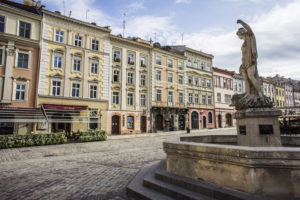
Su institución también procura proteger y recuperar la diversidad cultural y etnográfica de Ucrania, como hace, por ejemplo, con el legado del pueblo judío. ¿Cómo se siente al ver que alguien como el líder ruso les califica tan fácilmente como nazis?
Lviv siempre ha sido una ciudad multicultural y multiconfesional, como todas las ciudades europeas. Durante siglos han convivido en ella ucranianos, polacos, judíos, armenios, alemanes y otros. La singularidad de Lviv residía también en que era una ciudad de tres obispos metropolitanos: de las iglesias greco-católica ucraniana, católica romana y armenia. Una de las principales misiones de la comunidad de la ciudad era conseguir organizar un funcionamiento seguro y mutuamente confortable de todos sus ciudadanos, independientemente de su etnia y religión. La tolerancia mutua era la base de esta convivencia. Este espíritu de Lviv sigue vivo hasta hoy. Por ejemplo, cada año nuestro museo, junto con las comunidades judía, polaca o armenia, organiza diversos proyectos, como exposiciones, conciertos, festivales, etc.
El estereotipo negativo de que Lviv es una ciudad de nazis comenzó a ser cultivado por la Unión Soviética en la Segunda Guerra Mundial. Había que destruir todos los principios democráticos de autogobierno, los fundamentos de la sociedad civil y la capacidad de elegir libremente. En aquella época, la forma más eficaz de hacerlo era llamar a alguien nazi y acusarle de colaborar con los nazis. Estos métodos no han cambiado hasta hoy. Toda la propaganda y la narrativa de la Rusia moderna se remonta a la Segunda Guerra Mundial. En aquel entonces, la Unión Soviética fue uno de los responsables del inicio de la Segunda Guerra Mundial, pero quedó impune como vencedor.
Para terminar, ¿cómo podemos ayudar desde España y otros países a la protección de su patrimonio cultural?
Hoy necesitamos más que nada el cierre del espacio aéreo sobre Ucrania para detener los bárbaros bombardeos sobre nuestras ciudades. También existe una gran necesidad de equipamiento militar moderno que nos permita defender nuestra tierra y nuestro pueblo con dignidad, así como nuestro patrimonio cultural.
Por último, aplicar las sanciones más severas contra el agresor para detener la matanza de inocentes, incluidos niños, así como la destrucción de la infraestructura civil lo antes posible. El frente informativo también es un campo de batalla importante en el que los países de Europa, incluida España, pueden adoptar una posición más activa.
«Estoy muy agradecido a todo el mundo civilizado por su apoyo a Ucrania en esta lucha desigual contra el régimen de Putin y la Rusia chovinista.»
Muchas gracias por sus respuestas. Queremos enviar mucha fuerza y ánimo a todo el pueblo ucraniano desde Fantasymundo y España. Esperemos que esta pesadilla termine lo antes posible. Saludos cordiales.
(Entrevista realizada por Natalia Calvo Torel, con preguntas propias y de Aintzane Eguiluz, Mariló Catalán y Francisco Javier Illescas)
ENGLISH VERSION
INTERVIEW WITH ROMAN CHMELYK, DIRECTOR OF LVIV’S HISTORICAL MUSEUM
Good morning, Mr. Chmelyk. First of all, we want to send full support from both, Fantasymundo and our readers in these difficult times. We hope that the museum staff are safe, despite the current situation. And that this inglorious invasion comes to an end as soon as possible.
You are the director of the Lviv Historical Museum in Western Ukraine. Lviv is known as the «Paris of the East», and there is certainly a very European architectural and artistic atmosphere over there. Your museum owns a collection ranging from Prehistoric times to the most important events of the 20th century. What would you say are the key cultural highlights of Lviv?
«Ukrainians, on their behalf, are doing their best to save them, but we lack the means, mostly military ones.»
Lviv is a typical European city with long traditions of self-government based on the Magdeburg Law. Lviv is one of the most beautiful cities of Europe with objects that belong to the UNESCO World Heritage List. Architectural ensembles of the Rynok Square (15th — 19th centuries), Virmenska (14th— 19th centuries) and Ruska streets, the Dormition Church (16th — 17th centuries) and St. George’s Cathedral (17th century) are particularly valuable. Lviv is a city of museums, the number of which in our city is the largest in Ukraine; their collections are an essential part of centuries-old European cultural heritage. Preserved here in Lviv are unique artifacts from the history and culture of Ukrainian, Polish, Jewish, Armenian, Lithuanian, Czech, German, and French people, as well other nations of the world.
The Russian invasion has turned the life of the entire Ukrainian nation upside down. With regard to the museums in your city, what measures did you need to take or are you currently taking to protect Ukraine’s heritage?
Shelling of Ukrainian cities from the first day of war forced us to take immediate measures to preserve movable and stationary cultural heritage. In the architectural landscape of Lviv we can already see covered façades of the Boim (early 17th century) and Kampian (late 16th century) chapels, stained glass windows of the Latin Cathedral (14th — 18th centuries) and the Dormition Church (16th — 17th centuries), as well as sculptures of heroes of classical mythology on Rynok Square created by Hartman Witwer, etc., protected with wooden shields and metal sheets. Several sculptures from the streets of the city and all museum expositions of Lviv have been dismantled, while exhibits have been relocated to safe places.
Lviv’s History Museum’s building is so beautiful, a vestige of the city’s heyday and greatest prosperity in the 20th century. How can you live knowing that such a historic heritage is in real danger of disappearing?
Lviv Historical Museum is established on 10 locations, the buildings in which were built in the 16th — 20th centuries. Five of them belong to the UNESCO World Heritage List. This means, that this international organization acting within the UNN recognizes their uniqueness and significance of their preservation for future generations. At the same time, the Ukrainian state undertook certain obligations to preserve them. Their protection against terrorist rockets launched by the aggressor state must become an objective for the world society. Ukrainians, on their behalf, are doing their best to save them, but we lack the means, mostly military ones, to close the airspace and effectively counter the terrorist state.

President Zelenskyy appealed to all citizens to keep working as normally as possible. Have you all continued to work as usually in the museum? If not, what do you do in your daily life and that of the workers in the midst of war?
During the war, the efforts of our employees are focused on ensuring the maximum level of safety of museum objects and facilities. Certain categories work remotely. For security reasons we cannot receive visitors and carry out exhibition or educational activities.
When it comes to safeguarding historical pieces, have you had to make decisions about which pieces to protect and which not to protect? Your museum safeguards the ethnographic memory of Ukraine. What criteria would you follow when deciding what to move or preserve for conservation? Have you considered moving historical collections to other countries that have offered to take them in?
Our duty is to preserve all the artifacts for which we hold responsibility. It is extremely difficult to do that, while their number exceeds 360000. The last eight years of war in the East of Ukraine have taught us to be prepared for unusual situations. Every museum has decided on their most valuable items in accordance with their orientation. Such criteria are historical significance, artistic value, particular religious or memorial significance of an object, etc.

The whole world has witnessed the destruction of important heritage sites in Ukraine: the Maria Prymashenko museum, the historical museum in Chernigov or Ivankov, the Kvindzhi museum in Mariupol as well as its theatre… How far do you think the country’s heritage can be damaged? Do you think these are deliberate attacks?
The war started by Russia against Ukraine is aimed not only at the conquest of territories. First of all, this is a war of civilizations fought between the countries with different world outlook. The territory of Ukraine is just a battlefield. The circle of participants in this struggle is much wider. From this perspective, the destruction of Ukraine would be the case in point of what to be afraid of for the rest of the world. The destruction of Ukraine must be a prime example in order to keep the rest of the world in fear. With military force, including intimidation with nuclear weapons, they will try to expand the borders of Putin’s authoritarian regime. The cultural heritage of Ukraine is an essential part of Ukrainian identity. By Moscow’s logic it has to be annihilated completely, since mentally it is a part of hostile ideology. If Putin has no regard for the lives of his own citizens, whom he sent to war against Ukraine for no reason, then what value does the enemy’s cultural heritage have for him. Carthago delenda est.
The Spanish archaeologist Alejandro Martin Lopez said: «There is no more effective way to subjugate a society than to destroy everything that embodies its soul». Libraries, museums, all cultural and spiritual references… Russia has shown that neither history nor culture matter to them when it comes to achieving its objectives. Do you think you can fight against something like this? How can you safeguard the soul of a people in the middle of a war?
Russia’s war against Ukraine has united the Ukrainian society against all odds. Ukrainians, regardless of their language, religion, and party affiliation have stood up for protection of their Motherland, their territory and statehood. The fighting spirit of the army and civilians is extremely high. Ordinary civilians stand in lines to enlistment offices in order to join the ranks of the Armed Forces of Ukraine. Many of them have no military experience and thus are sent back home. Afterwards they join another queue for obtaining a gun license, and another one at the weapons store. All this testifies to the nation’s spirit and soul that become even more tempered in the fire of war.
What do you think are the ethno-national differences between Russia and Ukraine? Why do you think the Russians have tried to erase Ukraine as an independent country on several occasions?
Each nation and each state have their own history, culture, religion, traditions, and customs which shape their national consciousness and identity. Ukrainians and Russians are two different peoples living side by side for centuries. Speaking about habitual culture, Ukrainians have always attached great importance to individual housekeeping, personal freedom, and egalitarian family relations. Russians have been mostly prone to communal land ownership and collective management, as well as patriarchal relations in the family. Ukrainians predominately focused on building the structure and communication in the horizontal plane on the principle of network, sometimes neglecting the power hierarchy of their society. The value of personal freedom, treating what was foreign to them as other, but not alien – this is what shaped our people’s spirit, but sometimes it hindered state-building processes. Russians for centuries have accustomed themselves to function in a harsh state structure, where an individual was just a small and insignificant cog in a bigger machine. Russians have always been subjects of their state, while Ukrainians want to be citizens of their state. Ukrainians are accustomed to intensive development, relying only on their own strength. Russians have always preferred the extensive way of advancement, including expanding their territories at the cost of other nations. Thus, political cultures of modern Ukraine and Russia are not only different, but mutually exclusive.
Your institution also seeks to protect and restore Ukraine’s cultural and ethnographic diversity, as it does, for example, with the legacy of the Hebrew people. How do you feel when someone as the Russian leader so easily labels them as Nazis?

Lviv has always been a multicultural and multi-denominational city, like every European city, after all. For centuries Ukrainians, Poles, Jews, Armenians, Germans and others lived there side by side. The uniqueness of Lviv was also in it being a city of three metropolitan bishops: of Ukrainian Greek-Catholic, Roman Catholic, and the Armenian churches. One of the main missions of the city community was to organize a safe and mutually comfortable functioning of all its citizens regardless of their ethnicity and religion. Tolerance towards one another was the basis of this coexistence. This spirit of Lviv lives to this day. For example, each year our museum alongside the Jewish, Polish or Armenian communities has been organizing various projects, such as exhibitions, concerts, festivals, etc.
The negative stereotype about Lviv being a city of Nazis began its cultivation by the Soviet Union back in the days of World War II. All the democratic principles of self-government, foundations of civil society, and the ability to make a free choice had to be destroyed. During that time the most effective way to do that was to call someone a Nazi and accuse them of collaboration with the Nazis. These methods have not changed till the present day. All the propaganda and narrative of modern Russia date back to the World War II. Back then the Soviet Union was one of the perpetrators of the beginning of the Second World War, but remained unpunished as a victor.
Finally, how can Spain and other countries help to protect your cultural heritage?
Today we more than anything need the closure of the airspace above Ukraine in order to stop the barbaric shellings of our cities. There is also a great need in modern military equipment that will allow us to defend our land and our people with dignity, as well as our cultural heritage. Finally, implementing the most severe sanctions against the aggressor to stop the killing of innocent people, including children, as well as destruction of civil infrastructure as soon as possible. Informational front also remains an important battlefield, on which countries of Europe, including Spain, can take a more active position.
«I am very grateful to the entire civilized world for supporting Ukraine in this unequal struggle against Putin’s regime and chauvinistic Russia.»
Thank you very much for your answers. We send encouragement and strength from Fantasymundo and Spain to all the Ukrainian people. We hope this nightmare ends as soon as possible. Kind regards.
(Interview by Natalia Calvo Torel, with her own questions and those of Aintzane Eguiluz, Mariló Catalán and Francisco Javier Illescas).











